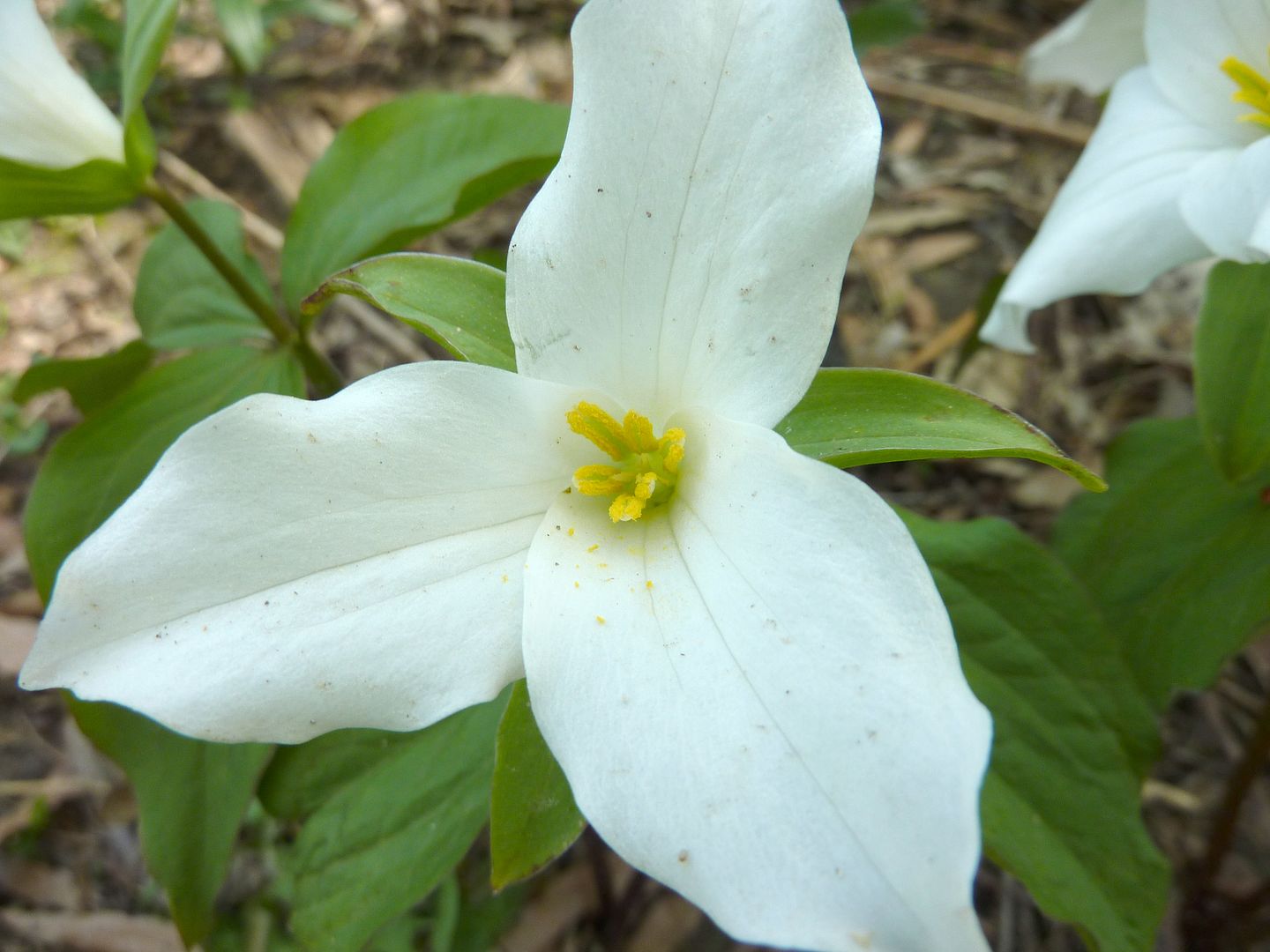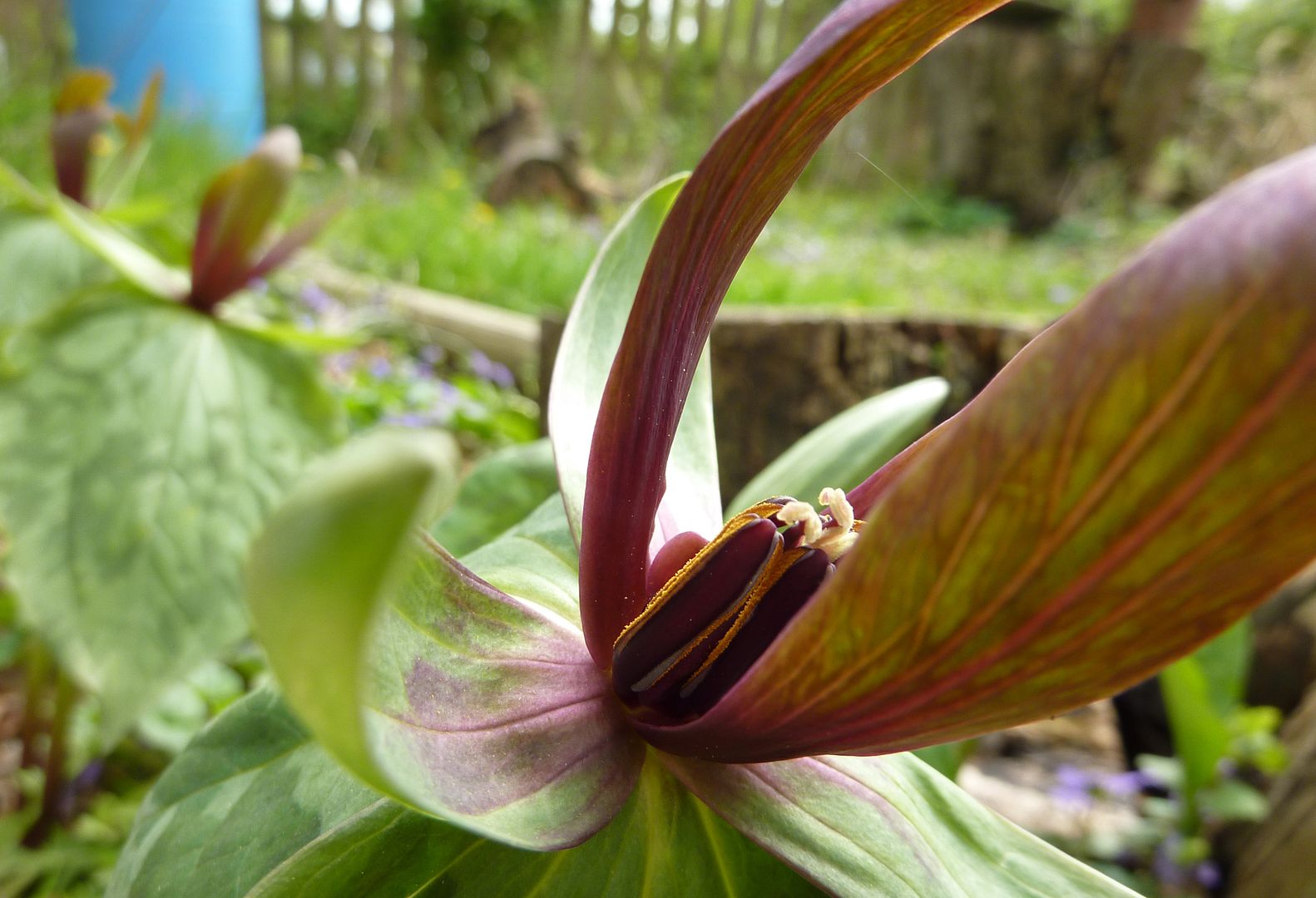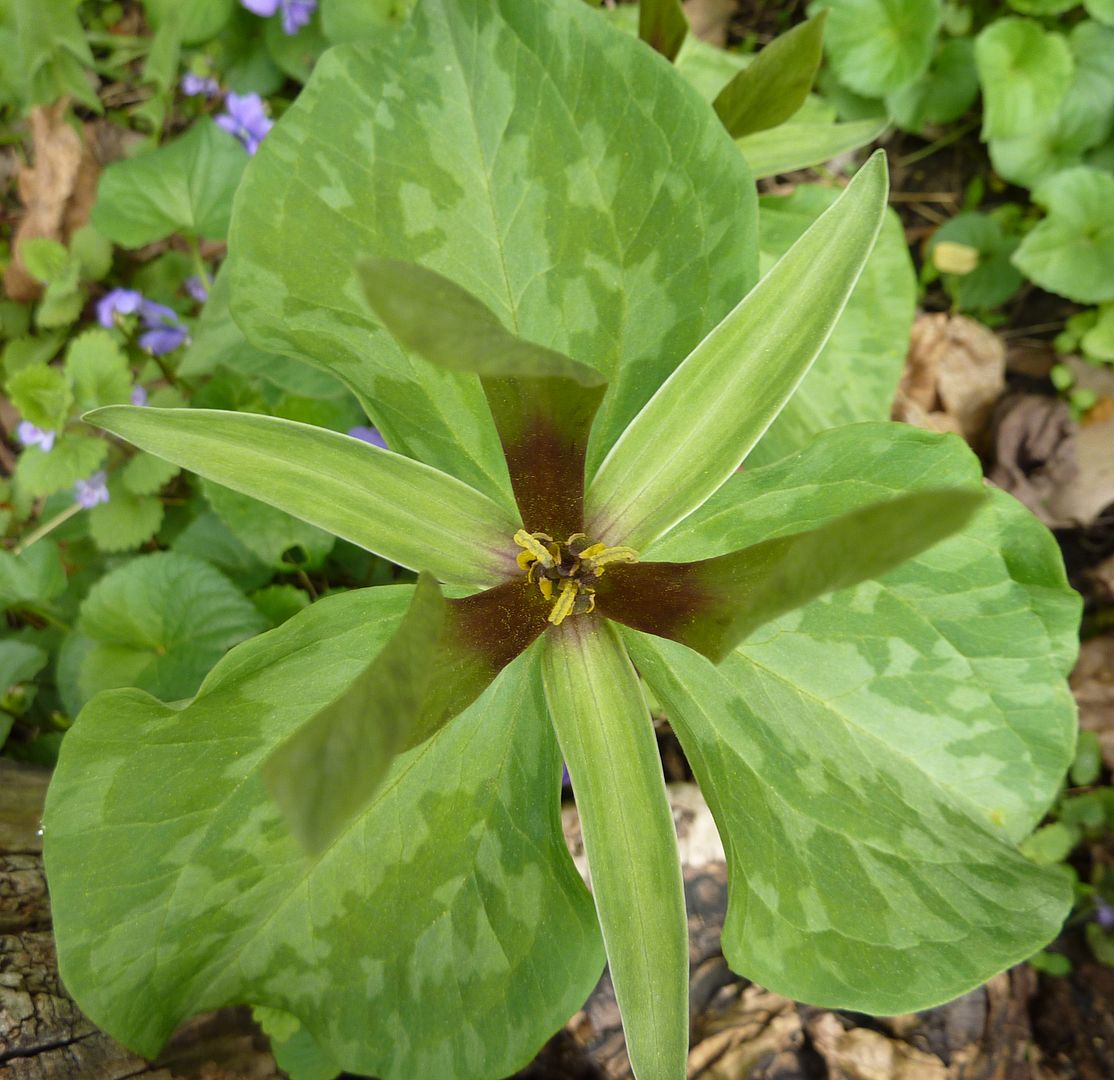The seriousness of the matter comes from the harvesting of Trilliums and a few other spring time ephemerals. Trilliums take two years just to germinate from seed, and then the better half of a decade to reach a flowering age from that. Adult plants do divide slowly but it's hard to imagen this happening on such a scale to supply a hardware store such as Lowes, let alone every store in the country. How anyone can get away with selling such plants for $3 a packet is astonishing. Native Plant Nurseries that sell Trilliums as Nursery Propagated rarely sell them for anything less than $10, and I've seen some go for as much as $50. This has lead many to believe that Botanical Wonders is simply digging it's plants up from our natural woodlands for a quick buck, and this is behavior that should not be tolerated.
 |
| Trillium grandiflorum |
So it's been a few years since I planted my "Red Trilliums" and they've all started flowering, some even dividing. Seen here in the foreground is Trillium cuneatum which isn't native to New Jersey but is found in Pennsylvania so I guess that's close enough. Note how the anthers have pollen going all the way up towards the tips, and how the clawed flower petals are red colored all the way up. Now note the two growing in the background. The red color stops about half way and I'd say they're more a green color. I assumed these were the same species until I realized another key difference.
They were producing a rotten apple-like fragrance in the late afternoon to attract pollinating flies. The T. cuneatum were not doing this at all! After strumming through a Trillium book I got at the Mt. Cuba Center I quickly found out what they were actually Trillium viridescens. You can see from their distrubiton at the bottom, here, that they're only native to patches of Arkansas, Oklahoma, Texas, Missouri and Kansas. (Though apparently cold hardy enough to be growing happily in New Jersey.)
In our front garden I have what appears to be Trillium recurvatum, in another garden I have what might be T. sessile which hasn't flowered yet and I'm left wondering what other surprises I've planted for myself. I'll admit identifying random Trilliums is fun but I would have rather known what I was planting before hand, if only to group them better.
In summary, the only native Trillium in my garden at the moment is Trillium grandiflorum. I don't hate the plants I got from Botanical Wonders, I'll be growing and propagating them as much as I can, but I can say for sure that I will never be buying a plant with their name on it ever again. What a tragedy it would be to find they were the blood diamonds of the plant world.

